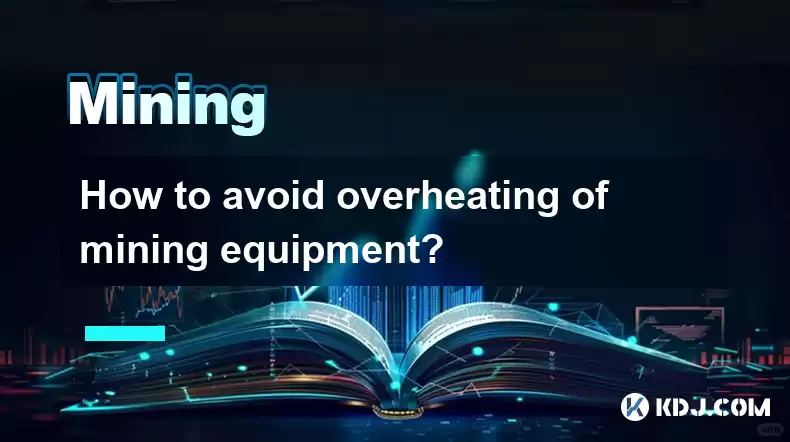-
 Bitcoin
Bitcoin $115100
1.27% -
 Ethereum
Ethereum $3675
2.71% -
 XRP
XRP $2.995
1.45% -
 Tether USDt
Tether USDt $1.000
0.02% -
 BNB
BNB $769.8
2.64% -
 Solana
Solana $168.0
3.25% -
 USDC
USDC $0.9999
-0.01% -
 TRON
TRON $0.3371
1.48% -
 Dogecoin
Dogecoin $0.2051
3.36% -
 Cardano
Cardano $0.7394
2.30% -
 Hyperliquid
Hyperliquid $38.15
0.42% -
 Stellar
Stellar $0.3966
-0.36% -
 Sui
Sui $3.486
2.93% -
 Chainlink
Chainlink $16.72
2.52% -
 Bitcoin Cash
Bitcoin Cash $568.0
4.36% -
 Hedera
Hedera $0.2440
2.59% -
 Ethena USDe
Ethena USDe $1.001
0.04% -
 Avalanche
Avalanche $22.16
2.06% -
 Litecoin
Litecoin $119.1
-0.73% -
 UNUS SED LEO
UNUS SED LEO $8.991
0.04% -
 Toncoin
Toncoin $3.232
-0.39% -
 Shiba Inu
Shiba Inu $0.00001233
2.82% -
 Uniswap
Uniswap $9.717
2.53% -
 Polkadot
Polkadot $3.664
1.85% -
 Dai
Dai $1.000
0.01% -
 Monero
Monero $281.2
-3.89% -
 Bitget Token
Bitget Token $4.350
1.55% -
 Cronos
Cronos $0.1428
5.07% -
 Pepe
Pepe $0.00001050
3.68% -
 Aave
Aave $262.3
3.54%
How to avoid overheating of mining equipment?
Prevent mining equipment overheating by ensuring proper ventilation, regular cleaning, and temperature monitoring; utilize additional fans or liquid cooling; and choose a cool, well-ventilated location.
Mar 24, 2025 at 01:35 pm

Key Points:
- Understanding the causes of overheating in mining equipment (poor ventilation, dust accumulation, component failure).
- Implementing preventative measures (proper ventilation, regular cleaning, monitoring temperatures).
- Utilizing cooling solutions (additional fans, liquid cooling systems, optimized room temperature).
- Recognizing the signs of overheating and taking immediate action.
- The importance of choosing the right location and environment for your mining operation.
How to Avoid Overheating of Mining Equipment
Cryptocurrency mining, particularly with ASICs and GPUs, generates significant heat. Overheating can lead to reduced hash rate, component damage, and even complete equipment failure. Preventing this is crucial for maintaining profitability and longevity of your mining operation. Understanding the causes is the first step towards effective prevention.
One primary cause of overheating is inadequate ventilation. Poor airflow prevents heat dissipation, leading to a build-up of hot air around the mining hardware. Dust accumulation acts as an insulator, further hindering heat transfer and exacerbating the problem. Faulty fans or other cooling components can also contribute significantly to overheating. Finally, operating equipment beyond its recommended thermal limits consistently will degrade components and shorten their lifespan.
Effective preventative measures begin with ensuring adequate ventilation. This could involve using powerful exhaust fans to remove hot air from the mining area or installing intake fans to draw in cooler air. Regular cleaning of your equipment is essential to remove dust buildup. This should be done frequently, depending on the environment. Use compressed air carefully to avoid damaging components. Regularly monitoring temperatures using hardware monitoring software is also vital. This allows for proactive intervention before temperatures reach dangerous levels.
Beyond preventative measures, you can implement various cooling solutions. Adding extra fans to your mining rigs can significantly improve airflow. For more intensive cooling, consider liquid cooling systems. These systems use liquid coolant to absorb heat more effectively than air cooling. Maintaining a cool ambient temperature in the mining room is crucial. This might involve using air conditioning or placing the equipment in a naturally cool location.
Recognizing the signs of overheating is critical for taking immediate action. High temperatures displayed on your monitoring software are an obvious indicator. However, other signs include unusual noises from the fans, system instability, or even automatic shutdowns. If you detect any of these, immediately investigate and address the underlying issue. Don't ignore warning signs; continued operation under high temperatures will damage your equipment.
Choosing the right location for your mining operation is a fundamental aspect of preventing overheating. Avoid hot, humid environments. A well-ventilated, climate-controlled space is ideal. Consider factors like ambient temperature, humidity, and the availability of sufficient power. The environment significantly impacts the effectiveness of your cooling strategies. Careful planning from the outset can save considerable trouble and expense later.
Common Questions:
Q: My mining equipment is overheating, what should I do immediately?
A: First, safely shut down the equipment to prevent further damage. Then, check for obvious issues like dust buildup or malfunctioning fans. Improve ventilation immediately – use additional fans if necessary. Monitor temperatures closely once you restart. If the problem persists, seek professional help.
Q: What are the best cooling solutions for cryptocurrency mining?
A: For basic cooling, additional case fans and improved room ventilation are effective. For more advanced cooling, liquid cooling systems offer superior heat dissipation. The best solution depends on your budget, the scale of your operation, and the ambient temperature.
Q: How often should I clean my mining equipment?
A: The frequency depends on your environment. In dusty environments, weekly cleaning might be necessary. In cleaner environments, monthly cleaning could suffice. Regular inspections are crucial to identify dust buildup before it becomes a major problem.
Q: Can overheating damage my mining equipment permanently?
A: Yes, prolonged exposure to high temperatures can permanently damage components, leading to reduced performance, decreased lifespan, and even complete failure. Preventative maintenance is essential to avoid costly repairs or replacements.
Q: What are the signs of overheating in mining hardware?
A: High temperatures reported by monitoring software, unusual fan noise, system instability (crashes, restarts), and automatic shutdowns are all indicative of overheating. Also, be aware of unusually warm surfaces on the equipment casing.
Disclaimer:info@kdj.com
The information provided is not trading advice. kdj.com does not assume any responsibility for any investments made based on the information provided in this article. Cryptocurrencies are highly volatile and it is highly recommended that you invest with caution after thorough research!
If you believe that the content used on this website infringes your copyright, please contact us immediately (info@kdj.com) and we will delete it promptly.
- Avalanche vs. Ruvi AI: Daily Sales Tell a Story of Crypto Disruption
- 2025-08-07 06:29:35
- DeSoc: The Crypto to Buy Now for a Decentralized Future (and Maybe 43x Gains!)
- 2025-08-07 06:50:16
- Arctic Pablo Coin: Riding the Meme Coin Wave with a Deflationary Twist
- 2025-08-07 07:18:13
- XRP Price Skyrocket? Decoding the Cryptocurrency's Next Move
- 2025-08-07 07:31:50
- Meme Coins in August 2025: Riding the Rally Wave
- 2025-08-07 06:56:08
- Big Whales, Altcoins, and Heavy Transactions: What's Moving the Crypto Market?
- 2025-08-07 06:29:35
Related knowledge

What are the differences between mining on Windows vs. Linux?
Aug 06,2025 at 11:29pm
Overview of Cryptocurrency Mining PlatformsCryptocurrency mining involves using computational power to solve complex cryptographic puzzles and validat...

Can you mine cryptocurrency using solar power?
Aug 07,2025 at 12:00am
Understanding the Basics of Cryptocurrency MiningCryptocurrency mining involves validating transactions on a blockchain network by solving complex cry...

How to build a mining rig inside a PC case?
Aug 06,2025 at 11:01pm
Understanding the Basics of a Mining Rig in a PC CaseBuilding a mining rig inside a PC case involves transforming a standard computer chassis into a d...

How to diagnose a faulty riser or cable in a mining rig?
Aug 07,2025 at 01:49am
Understanding the Role of Riser Cables in Mining RigsIn a cryptocurrency mining rig, riser cables serve as the bridge between the motherboard and the ...

How to set up a mining farm with multiple rigs?
Aug 07,2025 at 12:38am
Understanding the Basics of a Multi-Rig Mining FarmSetting up a mining farm with multiple rigs begins with understanding the core components involved ...

How to use a server PSU for a crypto mining rig?
Aug 06,2025 at 08:39pm
Understanding Server PSUs and Their Relevance to Crypto MiningCrypto mining rigs demand stable, high-wattage power supplies to run multiple GPUs effic...

What are the differences between mining on Windows vs. Linux?
Aug 06,2025 at 11:29pm
Overview of Cryptocurrency Mining PlatformsCryptocurrency mining involves using computational power to solve complex cryptographic puzzles and validat...

Can you mine cryptocurrency using solar power?
Aug 07,2025 at 12:00am
Understanding the Basics of Cryptocurrency MiningCryptocurrency mining involves validating transactions on a blockchain network by solving complex cry...

How to build a mining rig inside a PC case?
Aug 06,2025 at 11:01pm
Understanding the Basics of a Mining Rig in a PC CaseBuilding a mining rig inside a PC case involves transforming a standard computer chassis into a d...

How to diagnose a faulty riser or cable in a mining rig?
Aug 07,2025 at 01:49am
Understanding the Role of Riser Cables in Mining RigsIn a cryptocurrency mining rig, riser cables serve as the bridge between the motherboard and the ...

How to set up a mining farm with multiple rigs?
Aug 07,2025 at 12:38am
Understanding the Basics of a Multi-Rig Mining FarmSetting up a mining farm with multiple rigs begins with understanding the core components involved ...

How to use a server PSU for a crypto mining rig?
Aug 06,2025 at 08:39pm
Understanding Server PSUs and Their Relevance to Crypto MiningCrypto mining rigs demand stable, high-wattage power supplies to run multiple GPUs effic...
See all articles

























































































